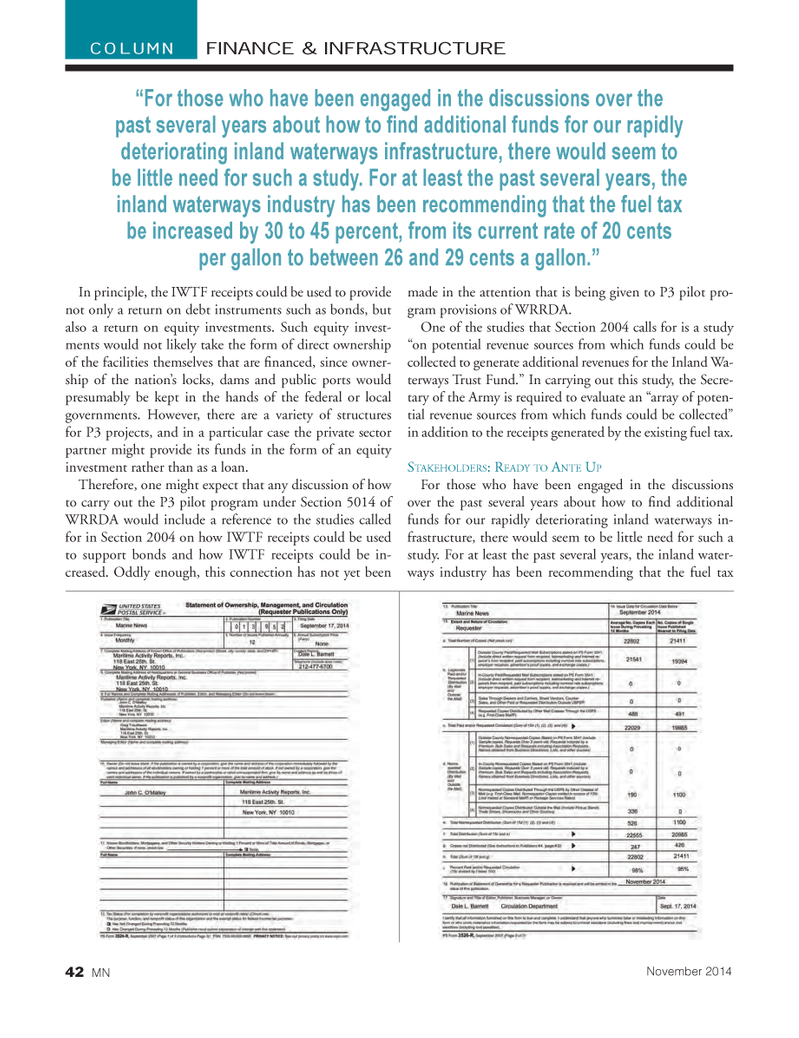
Page 42: of Marine News Magazine (November 2014)
Workboat Annual
Read this page in Pdf, Flash or Html5 edition of November 2014 Marine News Magazine
FINANCE & INFRASTRUCTURECOLUMN
In principle, the IWTF receipts could be used to provide not only a return on debt instruments such as bonds, but also a return on equity investments. Such equity invest- ments would not likely take the form of direct ownership of the facilities themselves that are fi nanced, since owner- ship of the nation’s locks, dams and public ports would presumably be kept in the hands of the federal or local governments. However, there are a variety of structures for P3 projects, and in a particular case the private sector partner might provide its funds in the form of an equity investment rather than as a loan.
Therefore, one might expect that any discussion of how to carry out the P3 pilot program under Section 5014 of
WRRDA would include a reference to the studies called for in Section 2004 on how IWTF receipts could be used to support bonds and how IWTF receipts could be in- creased. Oddly enough, this connection has not yet been made in the attention that is being given to P3 pilot pro- gram provisions of WRRDA.
One of the studies that Section 2004 calls for is a study “on potential revenue sources from which funds could be collected to generate additional revenues for the Inland Wa- terways Trust Fund.” In carrying out this study, the Secre- tary of the Army is required to evaluate an “array of poten- tial revenue sources from which funds could be collected” in addition to the receipts generated by the existing fuel tax.
STAKEHOLDERS: READY TO ANTE UP
For those who have been engaged in the discussions over the past several years about how to fi nd additional funds for our rapidly deteriorating inland waterways in- frastructure, there would seem to be little need for such a study. For at least the past several years, the inland water- ways industry has been recommending that the fuel tax “For those who have been engaged in the discussions over the past several years about how to fi nd additional funds for our rapidly deteriorating inland waterways infrastructure, there would seem to be little need for such a study. For at least the past several years, the inland waterways industry has been recommending that the fuel tax be increased by 30 to 45 percent, from its current rate of 20 cents per gallon to between 26 and 29 cents a gallon.” 42 MN
November 2014
MN Nov14 Layout 32-49.indd 42 10/24/2014 2:46:40 PM

 41
41

 43
43
